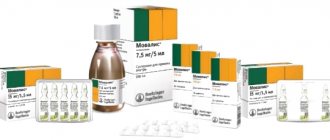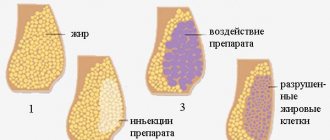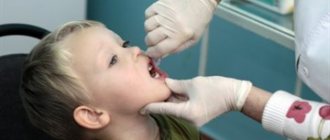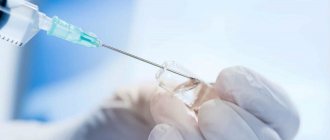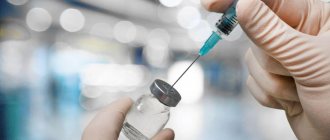Many people know nicotinic acid as a cosmetic product for hair. An inexpensive product can become a replacement for premium cosmetics aimed at stimulating hair growth and combating baldness. However, did you know that vitamin B3, or vitamin PP, serves as the basis for medications? Already at the beginning of the 20th century, nicotinic acid was used in the treatment of one of the types of vitamin deficiency - pellagra. A dangerous disease affects the skin, causes diarrhea, dementia and, if untreated, leads to death. Today, the scope of vitamin B3 has expanded significantly. In this article, we invite you to talk about why injections (or, as people say, injections) of nicotinic acid are needed, how they act on the body and for what diseases they are prescribed.
Pharmacodynamics and pharmacokinetics
Vitamin PP (nicotinic acid) is a vitamin that takes part in a large number of oxidative reactions occurring in living cells.
The drug has a specific anti-pellagric effect and is used to improve the activity of blood vessels .
The administration of nicotinic acid preparations makes it possible to normalize the permeability of vascular walls and, accordingly, reduce tissue swelling, improve the state of tissue (in particular, nitrogen and carbohydrate) metabolism and microcirculation, expand the lumen of blood vessels (a vasodilating effect is noted at the level of small blood vessels, including the vessels of the brain brain), increase the fibrinolytic activity of blood plasma and reduce platelet aggregation by suppressing the synthesis of TxAj (thromboxane A2), a mediator of their aggregation and degranulation.
In the body, vitamin PP is biotransformed into nicotinamide , which binds to the hydrogen-transferring coenzymes NAD and NADP. Regulates oxidation-reduction reactions, takes part in synthetic processes, metabolism of amino acids , fats , purines , proteins , as well as in glycogenesis and tissue respiration .
Reduces the rate of VLDL synthesis and inhibits lipolysis (fat degradation) in adipose tissue. Helps normalize blood lipid composition: reduces the concentration of LDL, triglycerides and total cholesterol , while increasing the content of HDL in the blood. Shows antiatherogenic and detoxification properties .
Ensures the conversion of the trans-form of retinol into cis-retinal, which is used in the synthesis of the visual pigment rhodopsin, stimulates the release of histamine and promotes the activation of kininogenesis.
Vitamin B3 is well absorbed in the pylorus of the stomach and the upper parts of the duodenum . With the participation of pyridoxine and riboflavin, it can be produced by the bacterial flora of the intestine from tryptophan , which comes with food. tryptophan required to form a milligram of the substance is 60 mg.
Metabolization occurs in the liver. Nicotinic acid and its metabolic products are excreted by the kidneys; when taken in high doses, the substance is excreted primarily in pure form.
Benefits of vitamin
As a medicine, nicotinic acid has the ability to dilate blood vessels. In addition, it can reduce the level of atherogenic lipid fractions and cholesterol in the blood. This allows the use of nicotinic acid injections to accelerate blood circulation, normalize the amount of cholesterol and triglycerides in the blood, and reduce the risk of blood clots.
Vitamin B3 is used as a means of controlling blood cholesterol levels. It is often prescribed to patients who have had a myocardial infarction, as well as to those who have an increased concentration of triglycerides in the blood. The use of the drug helps to overcome the main factors in the development of cardiovascular diseases.
The benefits of the vitamin also manifest themselves in improving the condition of nerve cells, which is especially important when fighting neurological pathologies. The substance normalizes the process of restoration of nerve cells, which affects the increase in the transmission of nerve impulses. As a result, blood pressure stabilizes.
Thanks to the use of nicotinic acid, it is possible to significantly reduce the dosage of insulin prescribed to patients with diabetes.
Nicotinic acid has a pronounced sedative effect. In the treatment of nervous system disorders, alcoholism, and attention deficit disorder, it is used as a means of improving the effectiveness of basic drugs.
Vitamin PP is prescribed to patients suffering from osteoarthritis, a chronic disease that affects joints, articular cartilage, bones, joint capsule, muscles and ligaments. Nicotinic acid relieves pain, making the patient feel better.
Another purpose of using the vitamin is to remove toxic substances from the body. This becomes possible thanks to the detoxifying properties of nicotinic acid.
Indications for use
Indications for the use of Nicotinic acid are:
- hypo- and avitaminosis caused by insufficient intake of vitamin B3 from food, exclusively parenteral nutrition, malabsorption syndrome (including against the background of pancreatic ), Hartnup disease, rapid weight loss, gastrectomy , diseases of the digestive system ( persistent diarrhea , including tropical , celiac enteropathy , Crohn's disease );
- conditions accompanied by an increased need for vitamin PP (diseases of the hepatobiliary system, prolonged fever, hyperthyroidism , prolonged stress, chronic infections, pregnancy, lactation, cancer);
- hyperlipidemia (including triglyceridemia and hypercholesterolemia );
- atherosclerosis;
- obliterating diseases of the vessels of the lower extremities (for example, Raynaud's disease );
- ischemic cerebral circulatory disorders;
- spasm of the urinary and biliary tract, vessels of the extremities;
- microangiopathy;
- diabetic polyneuropathy;
- hypoacid gastritis;
- colitis and enterocolitis ;
- facial nerve neuropathy;
- trophic ulcers and non-healing wounds.
Contraindications
Categorical contraindications for both dosage forms of the drug are serious liver dysfunction, bleeding, cerebral hemorrhage, hypersensitivity to nicotinic acid.
Nicotinic acid tablets should also not be taken during periods of exacerbation of peptic ulcer disease and in children under 2 years of age (as an anti-sclerotic agent ).
Additional contraindications to the administration of Nicotinic acid in ampoules are: atherosclerosis , hyperuricemia , severe arterial hypertension , gout , childhood.
Side effects
The drug stimulates the release of histamine , which in some cases may be accompanied by:
- redness of the skin (mainly the upper half of the body and face) with a burning and tingling sensation;
- hypotension;
- orthostatic hypotension (with rapid injection into a vein);
- increased secretion of gastric juice;
- dyspepsia;
- dizziness;
- feeling of a rush of blood to the head;
- hives;
- itching.
Side effects associated with long-term use of high doses of vitamin B3 are expressed as:
- anorexia;
- impaired liver function and obesity;
- vomiting;
- diarrhea;
- irritation of the mucous membrane of the digestive canal;
- ulceration (ulceration) of the gastric mucosa;
- transient increase in the activity of alkaline phosphatase, aspartate aminotransferase, lactate dehydrogenase;
- paresthesia;
- arrhythmias;
- decreased glucose tolerance;
- hyperglycemia.
Overdose symptoms
When nicotinic acid is administered intravenously by drip or intramuscular route in maximum dosages, signs of an excess of the substance in the body may occur. The most common manifestations of overdose:
- redness of the skin of the torso and face;
- dyspeptic disorders (nausea, vomiting, heartburn, profuse diarrhea);
- intense skin itching;
- arterial hypotension, which is accompanied by dizziness and fainting;
- paresthesia;
- cholestatic jaundice.
If such signs appear, you should immediately stop administering the drug. There are no specific antidotes for nicotinamide; symptomatic therapy is sufficient to relieve symptoms.
Instructions for use of Nicotinic acid
Nicotinic acid injections: instructions for use
The route of administration and dose depend on the indications. For ischemic stroke and pellagra, the solution is recommended to be injected slowly into a vein. For pellagra, it is also possible to give injections intramuscularly or subcutaneously.
Antipellagric therapy involves a single or double dose of 50 mg intravenously or 100 mg intramuscularly. The duration of treatment is 10-15 days.
For ischemic stroke, the drug is administered in a dose varying from 10 to 50 mg.
Injections can be given in three ways:
- 1 ml of a one percent solution into the muscle;
- intradermally (to replenish the need for vitamin);
- into a vein, 1-5 ml of a one percent solution, previously diluted in 5 ml of physiological solution.
IM and subcutaneous injections of the drug are quite painful and may be accompanied by a burning sensation. Intravenous injection may cause skin redness and a feeling of heat.
Such a reaction of the body is normal. On the contrary, the absence of redness may indicate the presence of certain problems with blood circulation.
Instructions for tablets
The tablets are taken after meals.
The prophylactic dose for adults varies from 12.5 to 25 mg per day, for children - from 5 to 25 mg per day.
For pellagra, adult patients are prescribed to take 100 mg of nicotinic acid 2 to 4 times a day. Course duration is 2-3 weeks. Children are given the drug 12.5-50 mg two or three times a day.
For vascular lesions of atherosclerotic origin, patients are recommended to take 2 to 3 grams of vitamin PP .
The starting dose for dyslipidemia is 50 mg per day in one dose. Subsequently, if the therapy does not provoke adverse reactions, the frequency of applications is increased to 2-3 times a day. The duration of the course is from one month. Intervals should be maintained between repeated courses.
In all other cases, the daily dose for adults is from 20 to 50, for children - from 12.5 to 25 mg. In some cases, the doctor may increase the daily dose to 100 mg for an adult patient. Depending on the indications, tablets are taken 2 or 3 times a day.
Interaction
N. acid enhances the effect of vasoactive drugs (in particular, ganglion blockers), which may be accompanied by attacks of orthostatic hypotension .
Bile acid sequestrants (for example, colestipol or cholestyramine ) reduce the bioavailability of acidic drugs, including n. acid, so the drug should be taken at least one hour before or no earlier than four hours after taking these medications.
When conducting an analysis to determine the level of glucose in urine, the drug may provoke a false-positive reaction with Benedict's reagent (copper sulfate solution).
N. acid has hyperglycemic potential and can significantly reduce the activity of acarbose, which can cause the development of decompensation of diabetes mellitus .
Due to the ability of N. acids cause hyperglycemia , patients who are prescribed the drug in combination with “ metformin + saxagliptin ” or “metformin + sitagliptin ” should constantly monitor their glycemic control parameters.
In patients taking nadroparin calcium, it is necessary to keep hemocoagulation parameters under control.
With simultaneous use of n. acids and combinations “ amlodipine + atorvastatin ”, n. acid and simvastatin , n. acid and lovastatin may increase the risk of developing myopathy . Combination n. acid with simvastatin can also provoke rhabdomyolysis .
Myopathy and rhabdomyolysis are also possible when using the combination “n. acid in lipid-lowering doses and Simvastatin + Ezetimibe .”
The risk of developing myopathy also increases when lipid-lowering (exceeding 1 gram per day) doses of n. acids in combination with Rosuvastatin . In this regard, treatment with Rosuvastatin should be started at 5 mg/day.
The combination “Nicotinic + Ascorbic acid ” should be used with caution.
The possibility of drug interaction with sodium heparin .
High doses n. acids reduce the effectiveness of the combination “ Glibenclamide + Metformin ”, the hypoglycemic effect of Gliclazide and the effectiveness of the combination “ Gliclazide + Metformin ”, as well as the hypoglycemic effect of Glimepiride .
When used simultaneously with n. acid reduces the effect:
- Glipizide;
- hypoglycemic effect of Gliquidone ;
- Insulin Lispro (including biphasic);
- Metformin;
- Repaglinide;
- hypnotic effect of Phenobarbital .
It is forbidden to mix n in one syringe. acid and Thiamine .
Despite the fact that the simultaneous use of n. acids with HMG-CoA reductase inhibitors can provoke myopathy , with simultaneous administration of the drug with Fluvastatin , the bioavailability of the latter, as well as the bioavailability of n. acid does not change. However, this combination should be used with caution.
special instructions
What is vitamin PP?
Wikipedia answers the question “what is nicotinic acid” that it is a white powdery substance, odorless and slightly sour in taste. The powder dissolves poorly in cold water, ethanol, ether and slightly better in hot water.
The gross formula of the substance is C₆H₅NO₂. It was first obtained in 1867 by the oxidation of nicotine with H2CrO4 (chromic acid).
The benefits and harms of vitamin B3
Pure vitamin B3 can strengthen the immune system so much that the human body acquires natural protection against Staphylococcus aureus and a number of other, no less serious, viruses.
Scientists are confident that very high doses can even stop HIV infection and bacterial infections, against which most existing drugs are powerless.
In addition, vitamin B3 has detoxifying .
The body of an adult man requires from 16 to 28 mg of vitamin B3 , the body of a woman - from 14 to 20 mg.
The need for the vitamin will increase during intense nervous and mental activity, increased physical activity, in people working in a hot shop, in a hot climate and in the Far North, during pregnancy and during breastfeeding, in people whose diets include vegetable proteins over animals (including people fasting and people on a low-protein diet).
Nicotinic acid is necessary for the release of energy from fats and carbohydrates, as well as for the normal course of protein metabolism. It normalizes the functioning of the pancreas and stomach, and is also part of the enzymes that ensure cellular respiration.
The vitamin has a beneficial effect on the heart, blood vessels, nervous system, maintains healthy mucous membranes of the oral cavity and intestines, and skin; takes part in ensuring normal vision, reduces high blood pressure and improves blood circulation.
Some scientists are inclined to believe that vitamin B3 prevents the cancerous degeneration of cells.
A lack of this substance in the body is accompanied by apathy, lethargy, fatigue, headaches, dizziness, dry and pale skin, insomnia, irritability, decreased appetite and body weight, constipation, palpitations, and decreased resistance to infections.
If a person does not receive enough nicotinic acid, he develops the disease pellagra . The first signs of the disease are:
- frequent, watery stools (3 or more times a day, without blood or mucus);
- poor appetite, heaviness in the stomach;
- belching and heartburn;
- redness of the oral mucosa;
- salivation , burning in the mouth;
- swelling and cracking of lips;
- protrusion of the papillae of the tongue with red dots;
- the appearance of deep cracks in the tongue and red spots on the face, hands, elbows and neck;
- swelling of the skin (which may hurt, itch, or form blisters);
- noise in ears;
- severe weakness;
- headache;
- crawling sensation and numbness;
- pressure fluctuations;
- unsteady gait.
Excess vitamin in turn can cause skin rashes, itching and fainting.
Products containing vitamin B3
To prevent hypovitaminosis PP , it is preferable to adjust the diet so that vitamin B3- containing foods are present in the diet.
Where is niacin found? In foods, the greatest amount of vitamin B3 can be found in liver, egg yolk, yeast, nuts, fish, milk, chicken, green vegetables, meat, legumes, ground nuts, buckwheat and any other food containing the α-amino acid tryptophan .
Heat treatment does not affect the amount of vitamin.
Why is Nicotinic acid needed in cosmetology?
Despite the fact that the instructions do not contain recommendations regarding the use of Nicotinic acid for hair growth or facial skin, this product is quite often used in beauty salons.
The rejuvenating effect of the drug is based on the ability of nicotinic acid to dilate blood vessels in the peripheral part of the circulatory system, increase the supply of oxygen to tissues, enhance the outflow and removal of aggressive waste and free radicals from skin cells.
As a result, the skin smoothes out, becomes more hydrated and acquires a beautiful and even color.
Nicotinic acid is also used for hair growth. One course usually requires at least 30 ampoules of solution.
After opening the ampoule, the solution is transferred with a syringe into a small container, after which it is distributed with your fingers (or a syringe without a needle) over the entire scalp: first at the temples and along the hairline, then along the partings. Typically, 1 ml of solution is sufficient for one procedure (this corresponds to the contents of 1 ampoule).
It is very important that your hair is clean, since a build-up of dust and grease will prevent the product from being absorbed into the scalp. Before using the drug, you should not use shampoos with silicones to wash your hair, as they will create a barrier for the drug to penetrate into the tissue.
Nicotinic acid is destroyed quite quickly in air, so the procedure should be performed as quickly as possible. An open ampoule cannot be stored.
Normal reactions to the drug are a slight burning sensation, a crawling sensation, redness and burning of the skin.
The appearance of hives, rashes, itching, and headaches indicate intolerance to nicotinic acid. If these symptoms occur, you should wash your hair and stop using the product further.
If, after using Nicotinic acid for hair, the scalp becomes dry or appears, it is recommended to dilute the solution with water in a 1:1 ratio. Such reactions are a consequence of skin sensitivity. Aloe juice can also be used as an alternative to water .
Once the solution is completely applied, the procedure is considered complete. Repeat it daily for a month. There is no need to wash off the drug.
After completing the course, almost all girls note hair growth of 3 cm.
An injection solution of Nicotinic acid has also found use as a remedy for cellulite. Before the procedure, the contents of one ampoule are diluted in 3 ml of water. Then a wide bandage is moistened in the resulting solution and tightly - but not tightly! - wrap it around problem areas.
This method is most effective in getting rid of cellulite on the thighs and abdomen, since these are the areas of the body that are most convenient to bandage. But to eliminate cellulite on the buttocks, it is recommended to use other means.
The bandages are wrapped in cling film and a towel (for insulation). Instead of a towel, you can use a blanket or blanket.
The duration of the first procedure should not exceed 15 minutes. If the skin responds well to the drug and there are no side effects, the time may be increased in the future.
Precautionary measures
It should be borne in mind that nicotinic acid injections are painful.
During treatment, it is necessary to constantly monitor liver function, especially if the patient is prescribed high doses of vitamin B3 .
To prevent hepatotoxicity, it is recommended to introduce a sufficient amount of methionine- foods into the patient’s diet (milk, dairy products, buckwheat, legumes, fish) or prescribe him to take lipotropic drugs (including methionine ).
Nicotinic acid, given its ability to irritate the mucous membrane, is used with caution for peptic ulcer disease (in remission) and hyperacid gastritis . If it is necessary to prescribe the drug in these cases, taking large doses is contraindicated.
To reduce the irritating effect on the mucous membrane of the digestive tract, it is recommended to take the tablets with milk.
Due to the likelihood of hepatotoxicity, taking high doses of vitamin B3 is also contraindicated for liver diseases (including hepatitis and cirrhosis ) and diabetes mellitus .
The use of the drug for the correction of dyslipidemia in diabetes mellitus is inappropriate.
Nicotinic acid for weight loss
Nicotinic acid stimulates metabolic processes, and it is this property that makes it advisable to use the drug for weight loss.
The effect does not develop due to burning excess fat, but due to balancing the concentration of cholesterol in the blood and detoxifying the body.
To achieve more pronounced results, taking the tablets should be combined with reasonable physical activity, a balanced diet and drinking enough water. To speed up your metabolism as much as possible, it is best to take the tablets immediately after meals.
It should be remembered that people with high acidity of gastric juice are recommended to take the drug with warmed milk or mineral water.
Pharmacological properties
Vitamin B3 is part of the coenzymes NAD and NADP, which are responsible for the transfer of hydrogen and ensure the normal course of redox reactions in the body. Coenzymes are also used for tissue respiration processes, regulation of lipolysis in adipose tissue and carbohydrate metabolism. The drug helps reduce plasma cholesterol levels and normalizes the rheological properties of blood. Niacin has a powerful vasodilating effect.
Injectable medications are made in the form of vitamin solutions with a concentration of the main substance of 1%, which corresponds to 10 mg/ml.
Nicotinic acid can be administered subcutaneously, into the venous bed or intramuscularly. After injection, the substance is evenly distributed in the bloodstream and undergoes metabolic reactions in the liver parenchyma. It is excreted from the body mainly through the kidneys in unchanged form.
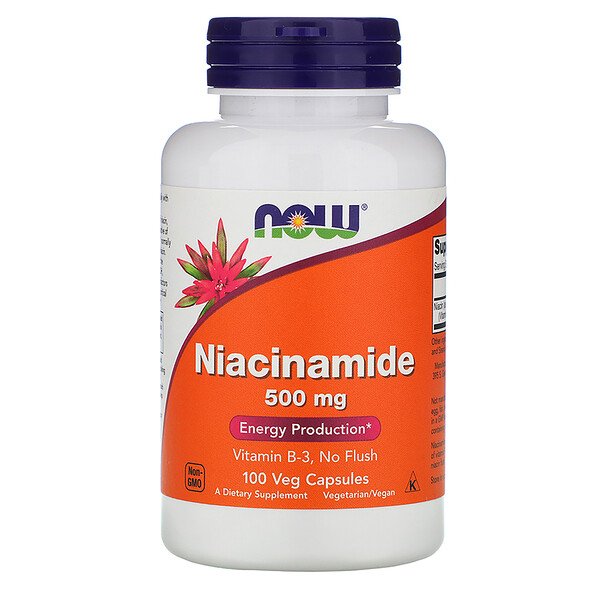
Now Foods, Niacinamide, 500 mg, 100 Capsules
453 rub.
More details
Reviews about Nicotinic acid
Reviews of Nicotinic acid tablets, as well as reviews of Nicotinic acid injections, are in most cases positive.
The drug has extensive indications for use and is effective for osteochondrosis of various parts of the spinal column, circulatory disorders in the brain and lower extremities, pellagra , decreased visual acuity, dyslipidemia , migraines , obesity, alcohol, occupational or drug intoxication, atherosclerosis and a number of other conditions.
Negative reviews are mainly due to the fact that after taking the tablets or administering the injection solution, the patient experienced a feeling of heat and severe redness of the skin. However, the instructions indicate that such phenomena are a normal physiological reaction of the body.
Reviews of Nicotinic acid for hair are also quite optimistic. The product helps strengthen the roots, improves blood circulation in the scalp, perfectly moisturizes the hair, eliminates dandruff, accelerates hair growth and prevents hair loss.
Cosmetologists recommend Nicotinic acid to improve complexion and skin condition, as well as to strengthen nails. In addition, Nicotinic acid is one of the most affordable and effective remedies for cellulite.
The metabolic effect of the drug allows it to be used to accelerate the breakdown of fats in programs aimed at reducing excess weight.
Despite the huge number of beneficial properties, nicotinic acid is a rather serious drug, the thoughtless use of which can lead to negative consequences for the body.
The advisability of prescribing a drug in one form or another can only be determined by a doctor.
Why are niacin injections needed?
Niacin injections are prescribed to the patient in various clinical cases. In clinical practice, the drug is used in the following cases:
- prevention of atherosclerosis;
- to improve the trophism of the skin (in the presence of long-term non-healing wounds, trophic ulcers);
- for diabetes mellitus;
- with osteochondrosis;
- for circulatory disorders;
- for problems with hair;
- with neuritis of the facial nerve (again, this is due to the stimulation of trophism of damaged nerves, helping to reduce the activity of inflammatory processes).
IMPORTANT! This is an incomplete list of possible deviations for which a doctor may prescribe nicotinic acid injections. You will receive more accurate recommendations only after a detailed examination.
Therapy for osteochondrosis
It has been proven that nicotinic acid effectively relieves pain that occurs during degenerative changes that occur in cartilage tissue. Since niacin has a beneficial effect on metabolic processes, improves blood circulation and helps deliver nutritional compounds to damaged tissues, it is prescribed at various stages of osteochondrosis.
Injections are most often recommended during an exacerbation of the disease in order to prevent or eliminate pain and inflammation.
IMPORTANT! In order for the therapeutic effect of the drug to occur as quickly as possible, it is injected directly into the affected area.
Acceleration of hair growth
Niacin can accelerate hair growth, as well as make it visually healthier and shiny. Since nicotinic acid can dilate blood vessels and improve blood circulation, it is logical to use it to normalize metabolic processes in hair follicles.
When using the drug, nutrients begin to flow more actively to the hair roots, due to which they begin to grow faster. The appearance of curls improves with this therapy - the strands become thicker, smoother, split ends, oily shine or dullness disappear.
IMPORTANT! Most cosmetologists recommend taking niacin capsules internally to treat the scalp and hair, but in some cases you can use vitamin preparations externally (by rubbing into the scalp) or inject them intramuscularly.
Weight correction
Nicotinic acid helps speed up the process of losing weight because it activates the transformation of fats and carbohydrates into energy substrates, lowers blood glucose levels, and slows down the processes of lipid synthesis and deposition.
The standard course of injections in this case is 30 days. But the injections will only be auxiliary means; the main therapy should consist of diet correction, physical activity and self-control. Niacin will help inhibit and excite the nervous system, thereby reducing stress levels (this helps control overeating and weight gain).
Circulatory pathologies
Injections of vitamin PP are also used for circulatory disorders in the vascular channels of the heart muscle and brain. Clinically, such pathologies manifest themselves in the form of ischemia, neurological pathologies, severe migraine-like pain in the head and dizziness, accompanied by a feeling of nausea.
The substance helps to dilate arteries and improve oxygen transport to tissues and organs.
Nicotinic acid price, where to buy
The price of Nicotinic acid tablets in Russian pharmacies is from 12 rubles. You can buy ampoules for an average of 90-100 rubles per package No. 10.
In Ukraine, the price of Nicotinic acid in ampoules is from 25 UAH for 10 injections. Tablets will cost approximately 8-9 UAH.
Having found out how much Nicotinic acid costs, we can say with confidence that this is one of the most inexpensive products for hair, face and nails.
- Online pharmacies in RussiaRussia
- Online pharmacies in UkraineUkraine
- Online pharmacies in KazakhstanKazakhstan
ZdravCity
- Nicotinic acid solution for in.
1% 1ml 10 pcs JSC Organika 57 RUR order - Nicotinic acid tablets 50 mg 50 pcs. JSC Ufimsky Vitam.z-d
39 RUR order
- Nicotinic acid for hair Mirrolla/Mirrolla 65ml Mirrolla Lab LLC
RUB 131 order
- Nicotinic acid bufus solution for in. 1% 1ml 10 pcs. AO Renewal of PFC
107 RUR order
- Nicotinic acid solution for in. 1% 1ml 10 pcs. JSC Dalkhimfarm
47 RUR order
Pharmacy Dialogue
- Nicotinic acid for hair 1% ampoules 5ml No. 10Update PFC JSC
RUB 231 order
- Nicotinic acid (tab. 50 mg No. 50) Irbitsky Chemical Plant
54 RUR order
- Nicotinic acid (amp. 1% 1ml No. 10)Update of PFC JSC
94 RUR order
- Nicotinic acid (amp. 1% 1ml No. 10) FS-UfaVita
39 RUR order
- Nicotinic acid (50 mg tablet No. 50) FS-UfaVita
32 RUR order
show more
Pharmacy24
- Nicotinic acid 50 mg No. 50 tablets PrAT “Technolog”, Uman, Cherkasy region, Ukraine
11 UAH. order - Nicotinic acid-Darnitsa 1% 1 ml N10 solution for injection
34 UAH order
PaniPharmacy
- NICOTINIC ACID ampoule Nicotinic acid solution d/in. 1% amp. 1ml No. 10 Ukraine, Health LLC
34 UAH order
- NICOTINIC ACID ampoule Nicotinic acid solution d/in. 1% amp. 1ml No. 10 Ukraine, Darnitsa ChAO
35 UAH order
- NICOTINIC ACID tablets Nicotinic acid tablets. No. 50 Ukraine, Tekhnolog ChAO
11 UAH order
show more
List of drugs
Nicotinic acid medications for injection are available in glass ampoules of 1 ml each. In addition to niacin, the preparations contain sodium bicarbonate and water. Standard packaging contains 10 ampoules in a cardboard box and detailed instructions from the manufacturer. Medicines with vitamin PP can be bought in hospital pharmacies at a low price. Below are the drugs that are most common in Russia.
| Name of medicine | Manufacturer and country of production | Prices in pharmacies |
| Nicotinic acid-SOLOpharm injection solution | Grotex LLC, Russia | From 27 rubles |
| Nicotinic acid, injection solution 1% 1 ml | Pharmstandard-Ufavita, Russia | From 41 rubles |
| Nicotinic acid ampoules 1%, 1 ml, 10 pcs | Health, Russia | From 23 rubles |
| Nicotinic acid, ampoules 1%, 1 ml | Biosynthesis, Russia | From 22 rubles |
| Nicotine supplement Bufus Renewal injection solution 1% | PFC update, Russia | From 71 rubles |
Open catalog

